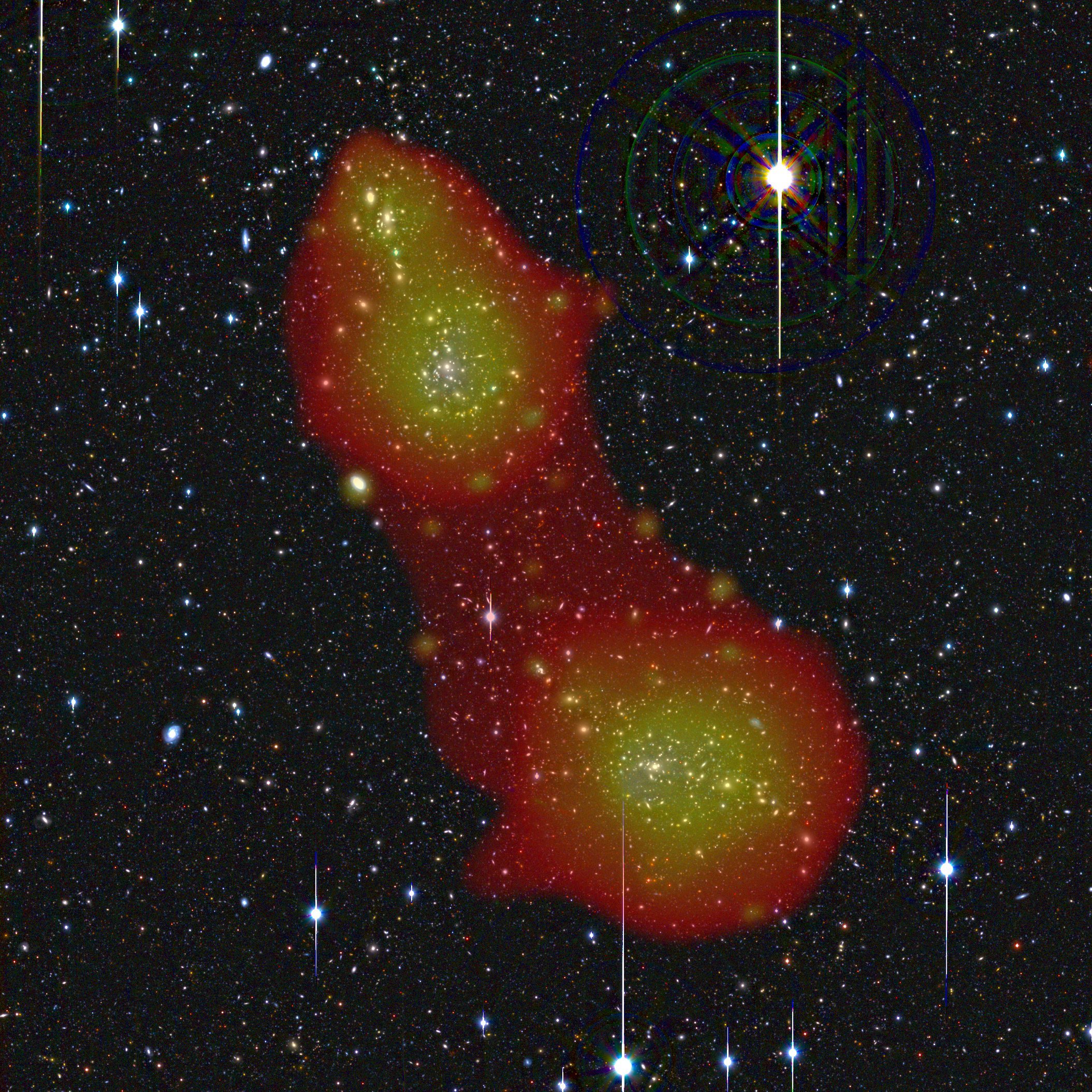
SRON astronomers have been awarded four weeks of observation time at the European X-ray telescope XMM-Newton (ESA) to study a black hole and the origin of chemical elements in the universe. It is exceptional that the astronomers have received so much time on this workhorse of X-ray astronomy. Due to the huge international interest in the telescope only one in seven requests for observation time on XMM-Newton are honored.
The SRON astronomers hope to use the data to discover more about how the universe has been enriched with heavy metals and what happens in the direct vicinity of a supermassive black hole. The evolution of chemical elements such as oxygen, silicon and iron is interesting as these are the building blocks of planets and of life on earth. These heavier elements were formed in supernova explosions during the evolution of the universe. SRON researcher Jelle de Plaa hopes that the new observations from XMM-Newton will shed light on the properties of stars responsible for the production of most of these elements. The data might also provide more insight into how the explosion occurs during certain types of supernova.
For the largest part of the observation time, in total about 3 weeks, XMM-Newton will focus on 11 clusters of galaxies. De Plaa: “The aim is to determine the concentrations of chemical elements in the hot gas of these clusters. Clusters of galaxies contain hundreds of galaxies each of which contains hundreds of billions of stars. The galaxies are embedded in a very rarefied and hot gas that emits X-rays. The X-ray telescope XMM-Newton can accurately unravel this radiation into different wavelengths from which we can determine the elements present in the gas. We can learn more about the origin of these important chemical elements by comparing the concentrations measured with theories about how elements are produced in supernova explosions and which stars become supernovas.”
Black hole
Besides the aforementioned clusters XMM-Newton will also spend a total of one week observing the supermassive black hole in galaxy NGC 5548. These observations form the core of an observation campaign in which the space telescopes Hubble, Swift and possibly Suzaku will participate. Based on the new data astronomers will be able to accurately study the outflow of gas in the immediate vicinity of the black hole.
Contrary to what many people think, not all matter around a black hole is swallowed up. On the journey inwards the gas emits large quantities of X-rays and ultraviolet light. This radiation can be so strong that part of the inflowing gas can be diverted. This causes winds that move away from the black hole at a speed of several hundred kilometers per second. SRON researcher Jelle Kaastra: “Around the black hole in NGC 5548 there is a rotating and eddying ring of dust and hot gas. The inner edge of the ring is partly blown away by the strong radiation and therefore forms a wind. As the quantity of radiation is highly variable the characteristics of the wind are constantly changing. By regularly observing this object with several telescopes at once we hope to discover the exact nature of this wind.”
The research on NGC 5548 is a follow-up to the successful observations on the supermassive black hole in Markarian 509 in 2011, which for the first time revealed several unusual characteristics of a ‘turbulent’ black hole. The new observations on NGC 5548 should reveal how the immediate environment of black holes can differ.
The observations on the clusters and the black hole will be spread out over a two-year period from 2013 to 2014. SRON astronomers Wim Hermsen (pulsars) and Elisa Costantini (cosmic dust) have also been awarded observation time on XMM-Newton.


